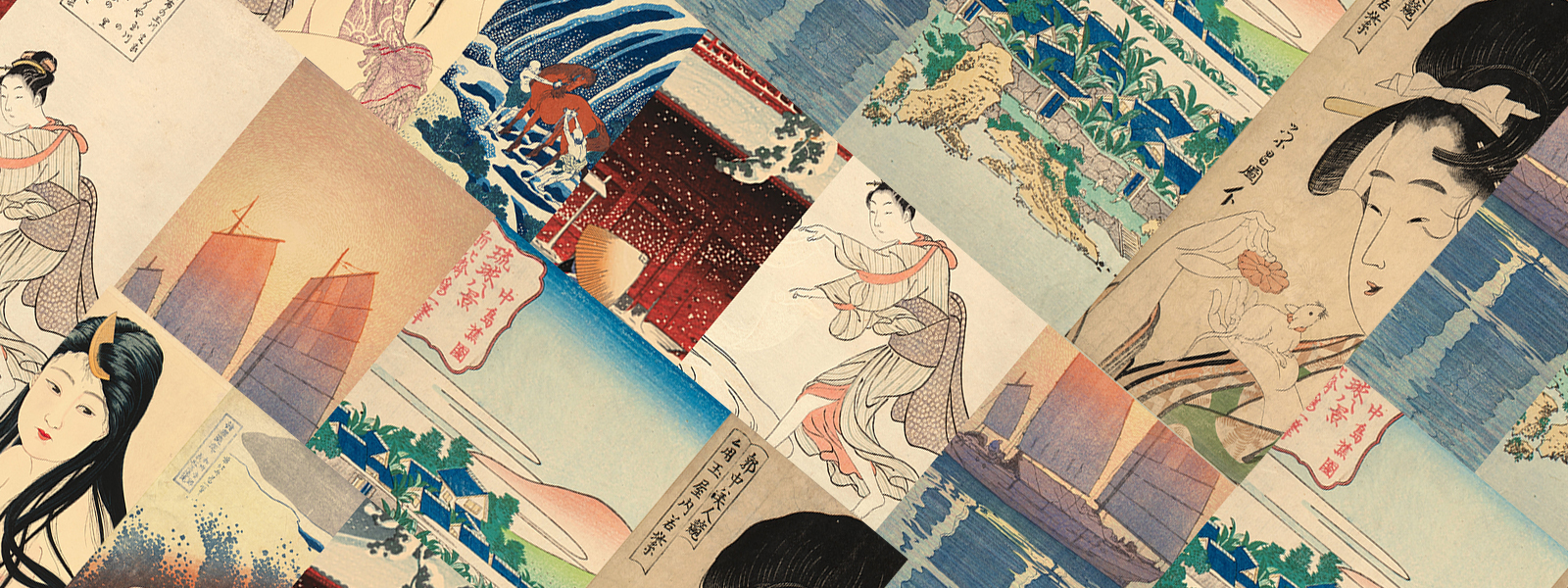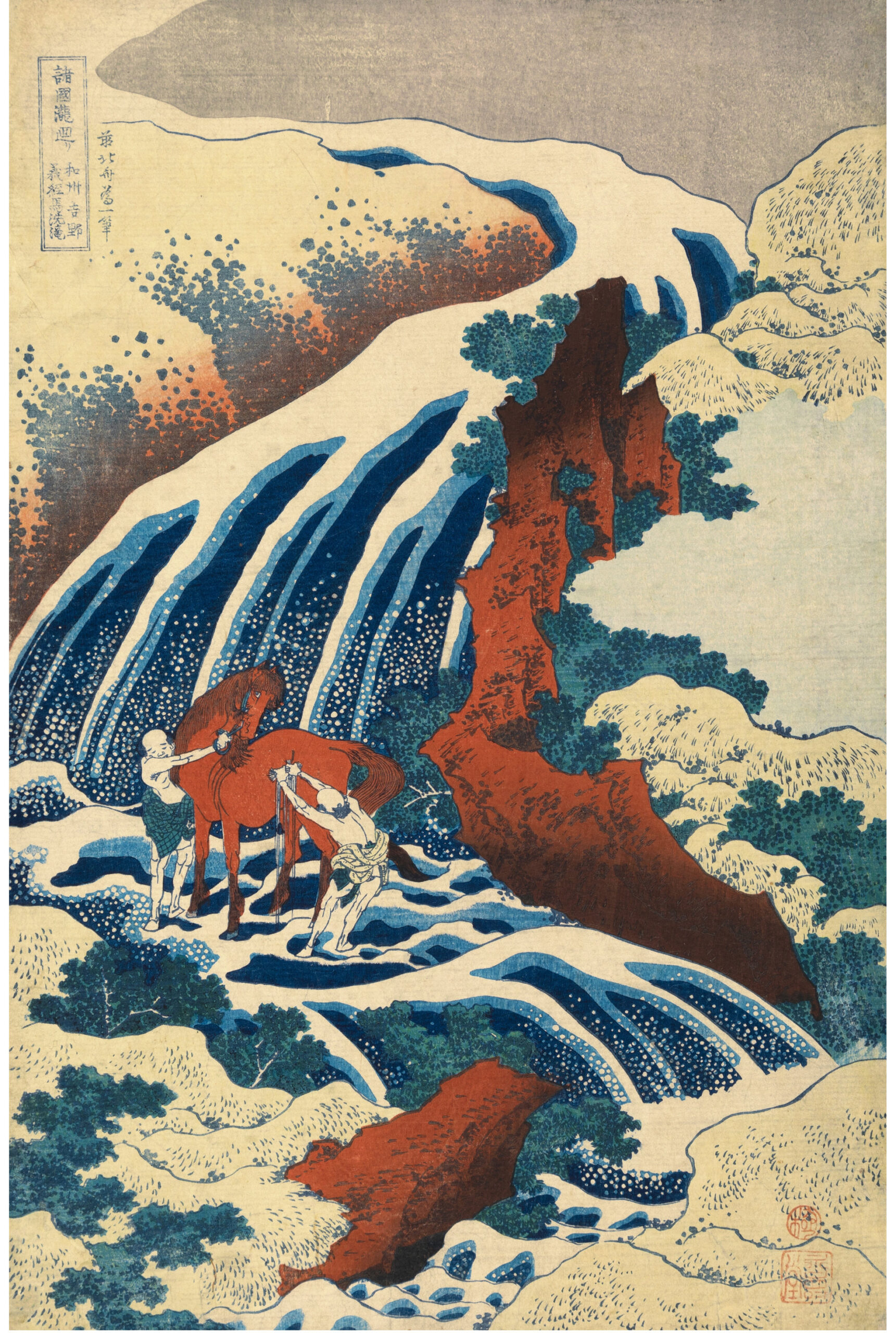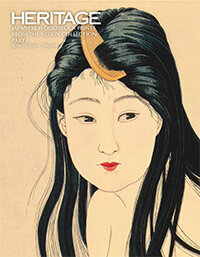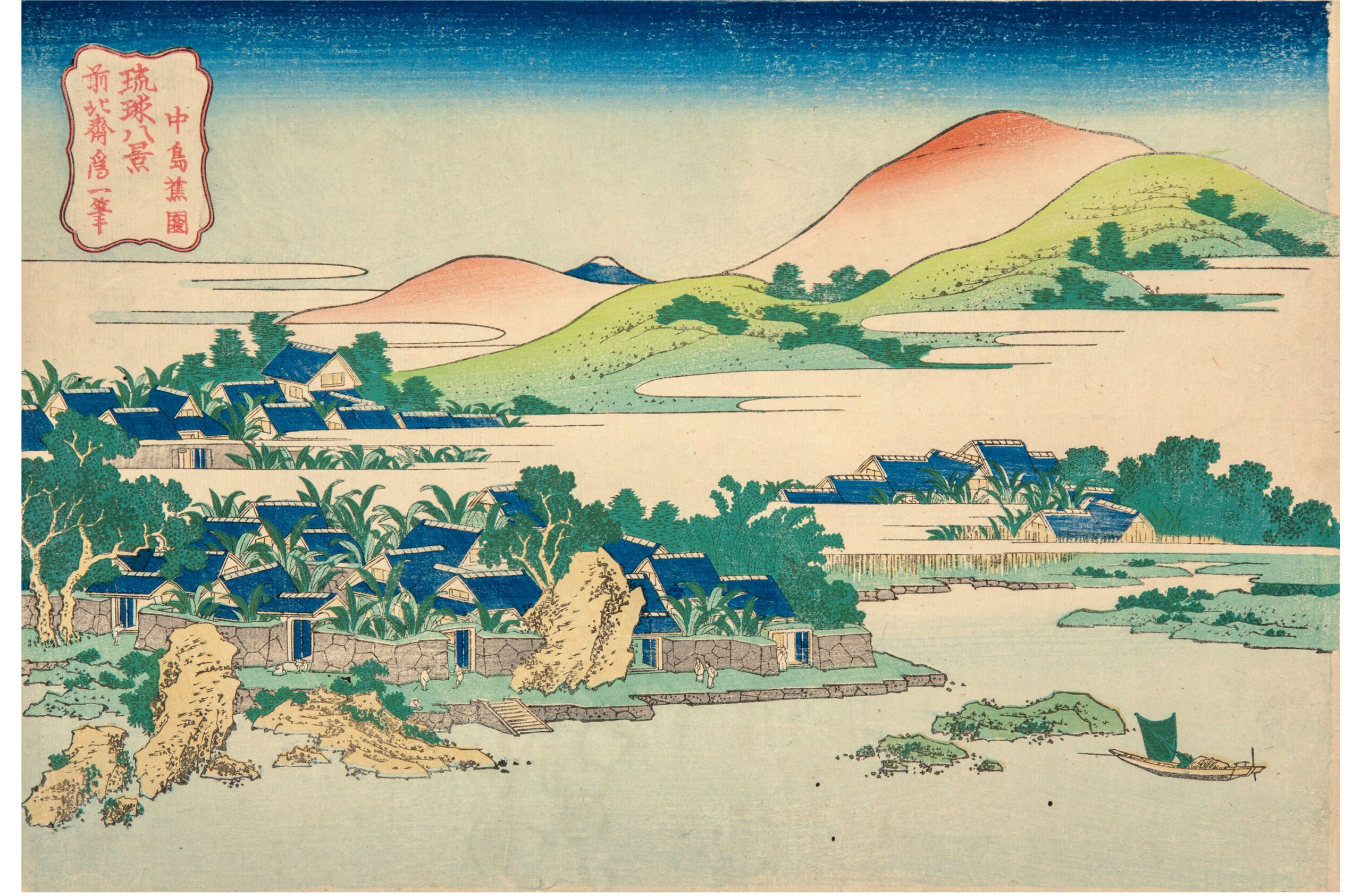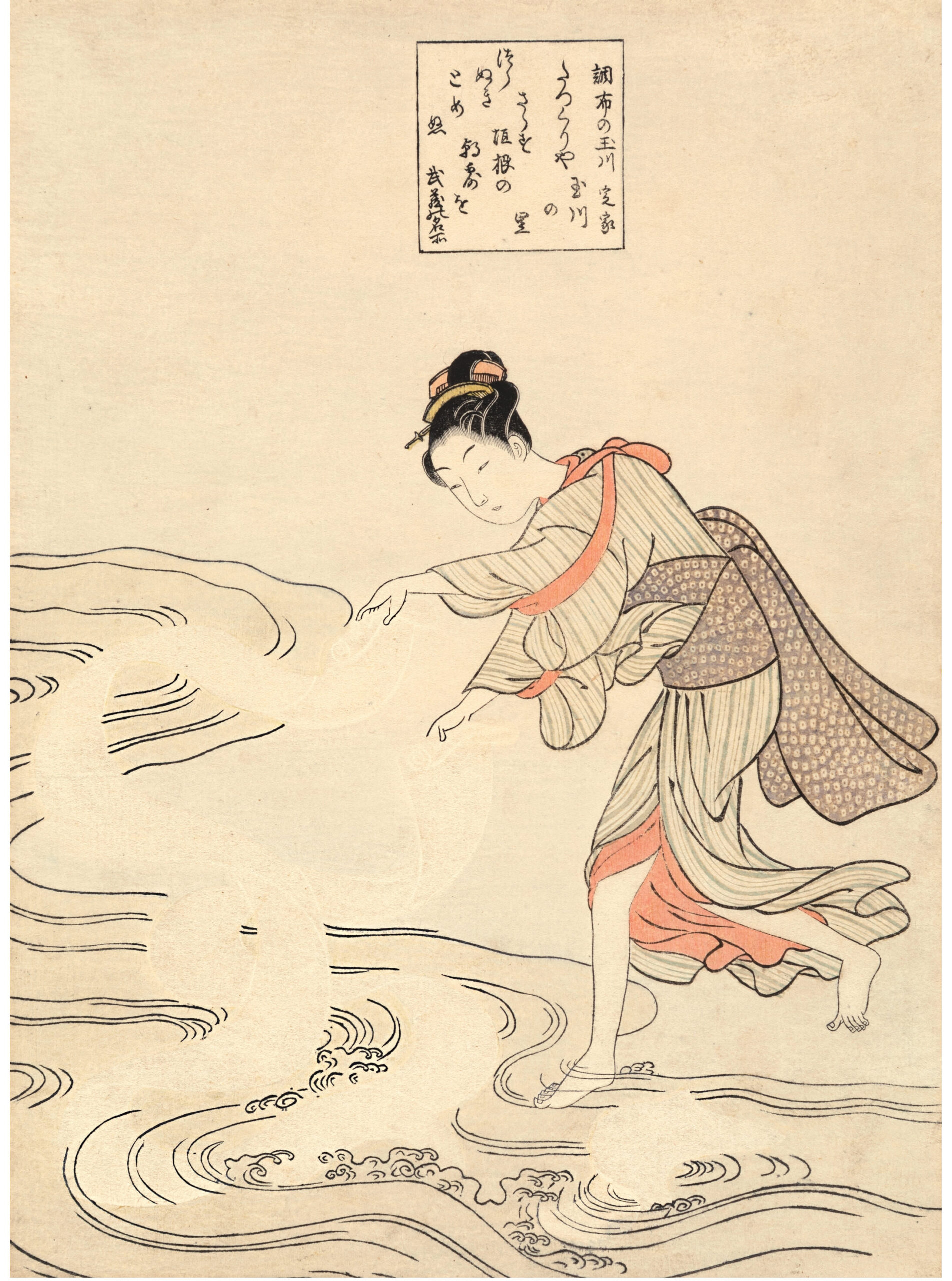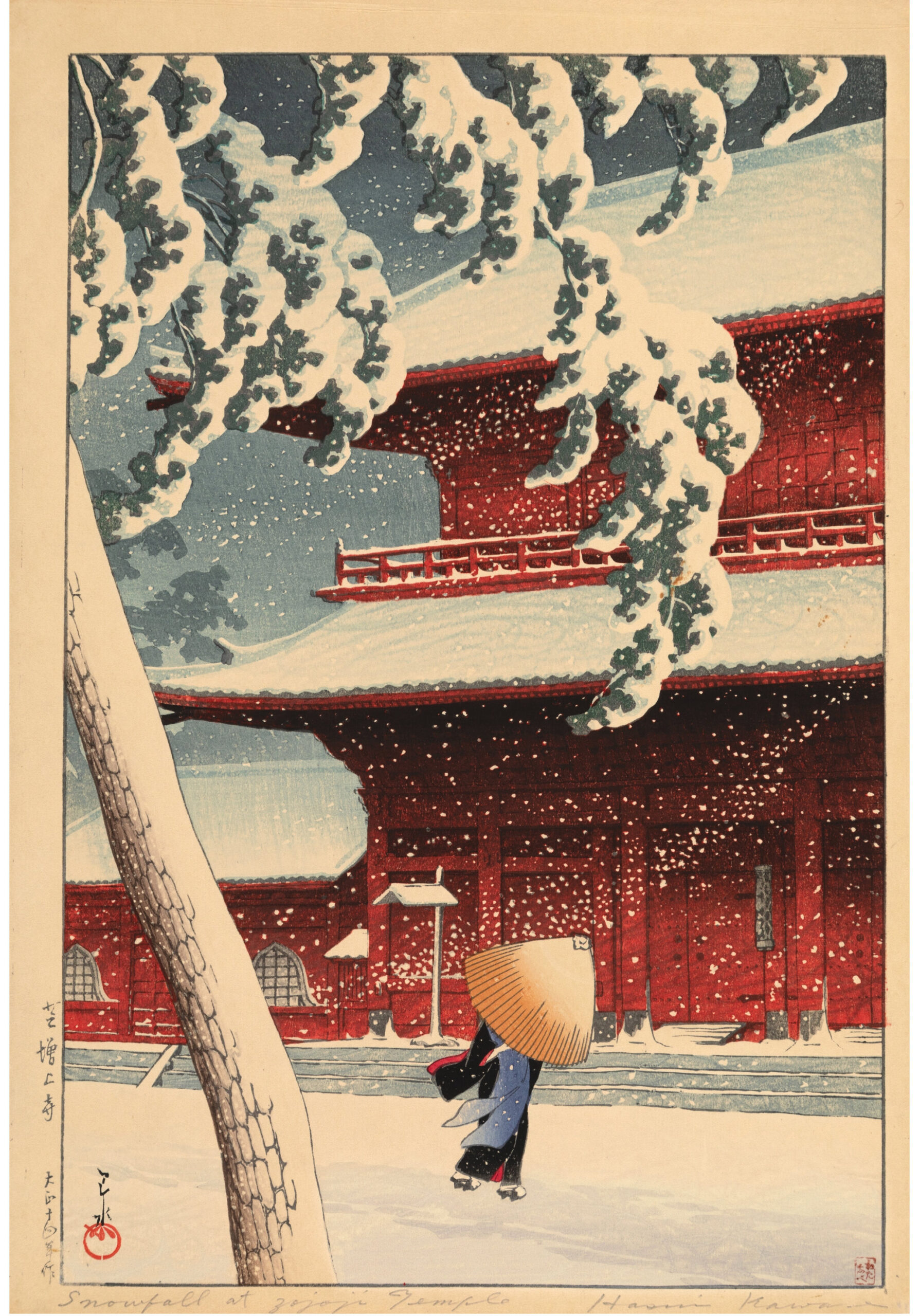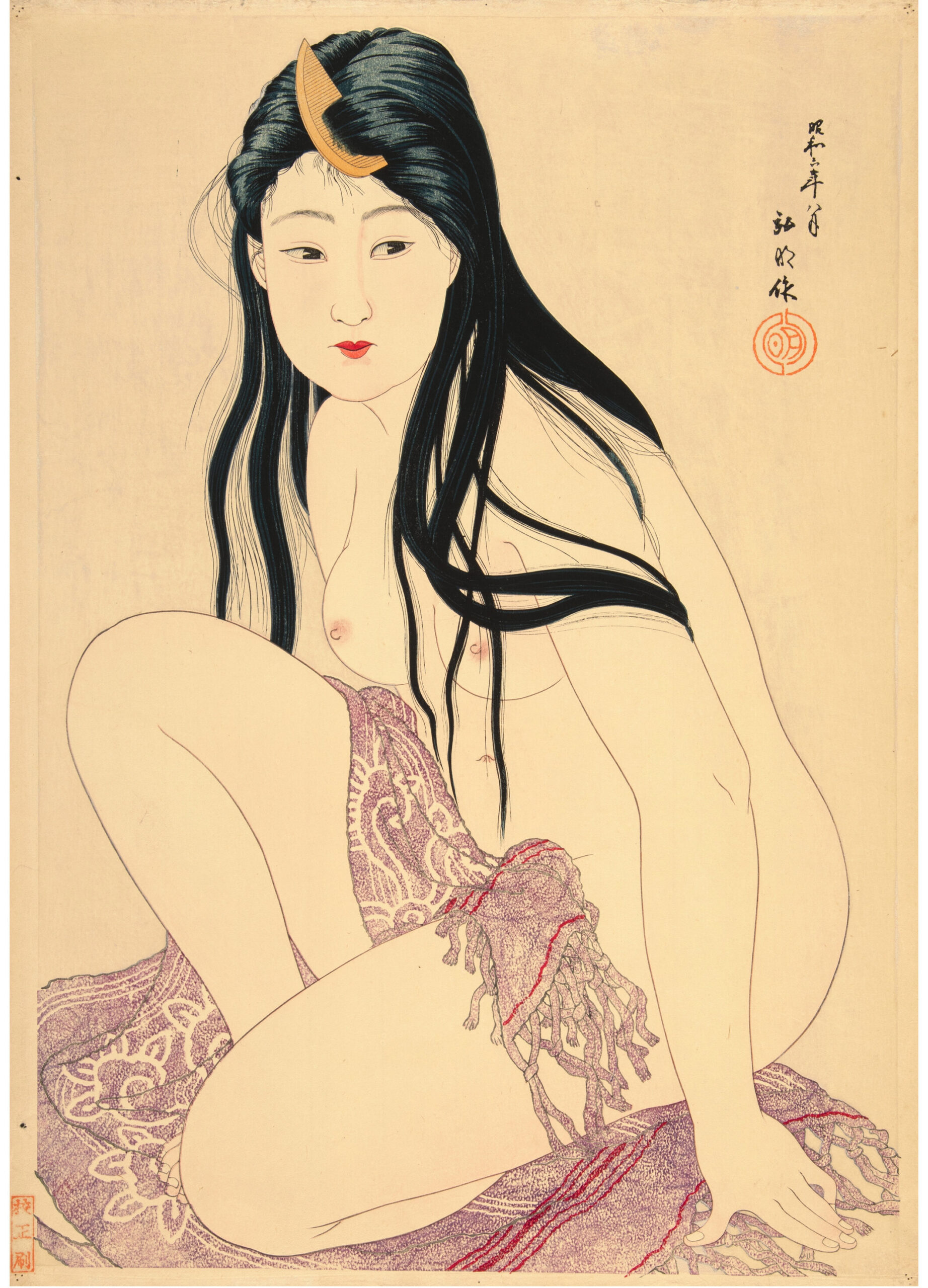HOW ONE COLLECTOR’S PASSION FOR UKIYO-E LED TO AN ENVIABLE ASSEMBLAGE OF WORKS BY KATSUSHIKA HOKUSAI, TAKAHASHI HIROAKI AND OTHER CELEBRATED ARTISTS
By Christina Rees
A great instinct for collecting does not happen overnight. Seasoned collectors with spectacular taste have spent years – often decades – racking up a rich history of both scholarship and genuine desire as their collections take shape and evolve along with their knowledge and deepening appreciation for the objects they collect. Ruth Sylvia Nelkin of Stamford, Connecticut, and New York City was a collector known for her killer eye and exquisite taste in Japanese prints, fine and antique jewelry, remarkable Fabergé and Russian works of art, virtuoso pieces of French art glass and landscape-focused American paintings. Already this year Heritage has presented various parts of Nelkin’s gracious collection in a handful of significant auctions, and its June 27 event, Japanese Woodblock Prints from The Nelkin Collection Part I Signature® Auction, features nearly 250 remarkable works by such masters of the form as Katsushika Hokusai, Takahashi Hiroaki, Yoshida Hiroshi and more.
Katsushika Hokusai ‘Yoshitsune’s Horse-Washing Falls at Yoshino in Yamato Province (Washu Yoshino Yoshitsune uma arai no taki),’ from the series ‘A Tour of Waterfalls in Various Provinces (Shokoku taki meguri),’ circa 1832
“The Nelkins’ varied possessions had one common denominator: quality,” says Nick Dawes, Heritage’s Senior Vice President of Special Collections. “Ruth Nelkin sought and found items of the highest caliber in every category. Above all, however, was her passion for ukiyo-e, the Japanese art of woodblock printmaking. Ruth Nelkin safeguarded these treasures during her lifetime, and now other collectors will have the opportunity to benefit from her connoisseurship.”
June 27, 2024
Online: HA.com/8151
INQUIRIES
Nick Dawes
212.486.3512
NickD@HA.com
Most of the items in The Nelkin Collection have not seen the market in more than 30 years, and all proceeds from their sale will go to charities that were close to the Nelkin family’s hearts, including the American Red Cross, Paws for Purple Hearts, People for the Ethical Treatment of Animals and Greenpeace.
The Nelkin Collection’s impressive assemblage of classic and modern Japanese prints includes great works by the 19th-century printmaker Katsushika Hokusai, a beautiful Kawase Hasui group, and many bijin (beautiful women) of shin-hanga (new prints) and modern prints called sosaku hanga. Art historians have long understood the enormous influence Eastern art has had on Western aesthetics and sensibilities, and by the mid- to late 1800s, Japanese prints took the West by storm (Japan’s ports opened to the West in the 1850s), and the elegantly controlled and colorful works, most notably at the time Japanese woodcuts and the works of ukiyo-e printmakers, visibly inspired artists, designers, collectors and institutions near and far.
Heritage’s work with the Japanese artworks in The Nelkin Collection was helped along by the widely recognized independent consultant and specialist in Japanese art Sachiko Hori, a veteran who knew Ruth Nelkin and her passion for collecting.
“Her collection of prints amazed me,” Hori says. “She was a passionate and determined collector. I feel grateful to Ms. Nelkin for pulling together all these outstanding works. Working with them was an extremely exciting and educational experience.”
From Katsushika Hokusai’s ‘Eight Views of the Ryukyu Islands (Ryukyu Hakkei) (complete series, eight works),’ circa 1832
The June 27 auction features a number of woodblock prints by perhaps the most recognizable Japanese printmaker in modern history: Katsushika Hokusai. Among others, a work from his series A Tour of Waterfalls in Various Provinces (Shokoku taki meguri), circa 1832, and his complete series Eight Views of the Ryukyu Islands (Ryukyu Hakkei), circa 1832, will hit the block this month. These works on paper are richly illustrated with strong lines; the latter he created to commemorate the Ryukyu tribute mission’s arrival in Edo in November 1832.
Suzuki Harunobu ‘The Jewel River at Chofu (Chofu no Tamagawa),’ from the series ‘Six Jewel Rivers (Mutamagawa),’ circa 1768
Six works by Suzuki Harunobu are also in the auction; his work The Jewel River at Chofu (Chofu no Tamagawa), from his series Six Jewel Rivers (Mutamagawa), circa 1768, depicts a young woman washing clothing in the river. The cartouche above her is a poem by Fujiwara no Teika. Early woodblocks are prominent in this event: Joining the above is a stunning circa-1796 work by Utagawa Kunimasa titled Okubi-e of the Actor Kataoka Nizaemon Vll in the Role of Iyo no Taro published by Nishimuraya Chusuke.
Kawase Hasui ‘Zojo-ji Temple in Shiba (Shiba Zojoji),’ from the series ‘Twenty Views of Tokyo (Tokyo nijukkei),’ 1925
The iconic work by Kawase Hasui titled Zojoji Temple in Shiba (Shiba Zojoji), from the series Twenty Views of Tokyo from 1925 (14th year of Taisho), is one of the most indelible woodblock print images in history, and it makes an appearance in this event. It depicts a winter scene with falling snow indicative of the shin-hanga movement, initiated in large part by the publisher of this print, Watanabe Shozaburo. Hasui’s gift for setting the mood via color and light is at full strength in this work. A handful of significant prints by Torii Kotondo join it on June 27, including his circa-1933 Combing Her Hair (kami suki) and his circa-1930 Morning Hair (Asa negami).
Takahashi Hiroaki (Shotei) ‘Abalone Diver (Awabi tori),’ 1931
Six remarkable compositions by the great Takahashi Hiroaki are also in the auction, including the image used on the cover of the auction’s catalog: Abalone Diver (Awabi tori) from 1931. The print appears to be based on the painting Comb, created in oil on canvas in 1913 by Teramatsu Kunitaro. From 1929 to 1932, Fusui Gabo published many of Takahashi’s prints of beauties and cats, and many of his woodblocks and print stock were destroyed during World War II, making his prints from this period rare.
Yoshida Hiroshi ‘Morning (Asa),’ from the series ‘The Inland Sea (Seto Naikai shu) (six works),’ 1926
The six works from Yoshida Hiroshi’s series The Inland Sea (Seto Naikai shu) from 1926 are a highlight in this event; his sailboats capture Japan’s serene coastal landscapes with selectively inked background and gentle differing gradients of each print, resulting in depictions of different times of the day or atmospheric conditions. Ito Shinsui’s Passing Rain (Hideri ame) from 1917 is another highlight, as is the indelible A Leaping Carp with Poems, circa 1820, by Ryuryukyo Shinsai and a famous work from Chokosai Eisho’s circa-1795 series Contest of Beauties of the Pleasure Quarters (Kakuchu bijin kurabe) titled Okubi-e of the Courtesan Wakamurasaki of the Teahouse Kadotamaya (Kadotamaya Wakamurasaki) Feeding a Mouse. This charming depiction of a courtesan holding a small mouse has been reproduced countless times.
Chokosai Eisho ‘Okubi-e of the Courtesan Wakamurasaki of the Teahouse Kadotamaya (Kadotamaya Wakamurasaki) Feeding a Mouse,’ from the series ‘Contest of Beauties of the Pleasure Quarters (Kakuchu bijin kurabe),’ circa 1795
“It struck me that in auctions, Ms. Nelkin always sat in front,” Hori remembers. “I doubt she ever shook her head to indicate ‘no’ to auctioneers. That was her determined way, resulting in this magnificent collection with depth and variety.”
 CHRISTINA REES is a staff writer at Intelligent Collector.
CHRISTINA REES is a staff writer at Intelligent Collector.

